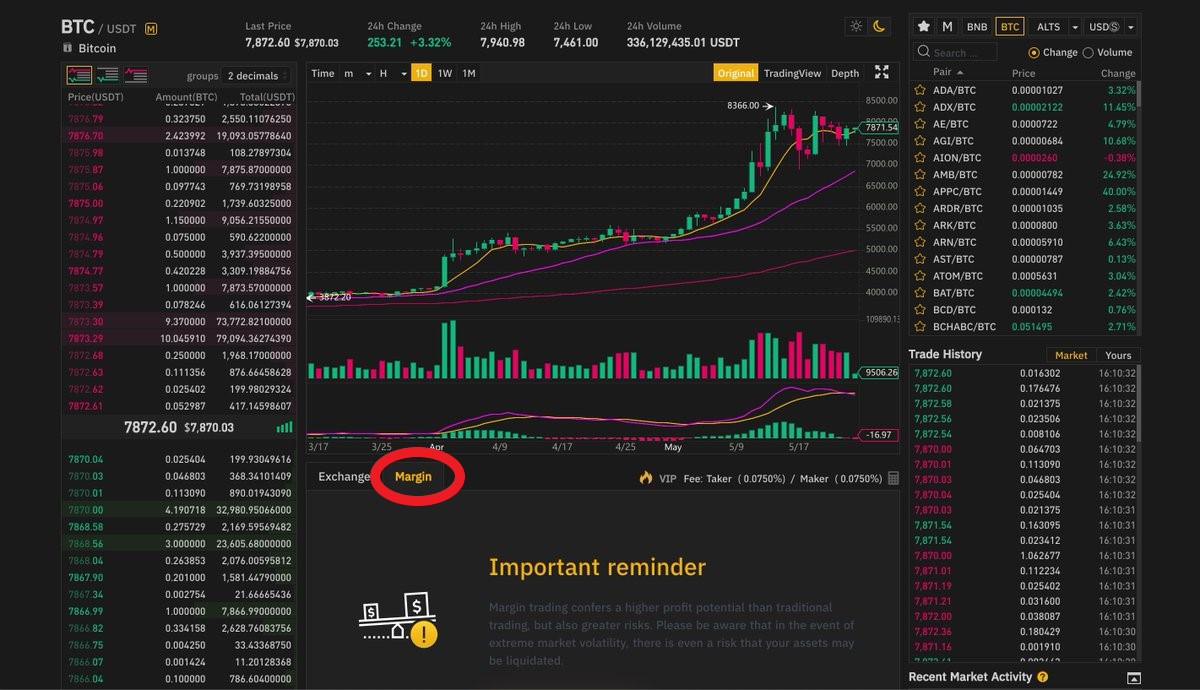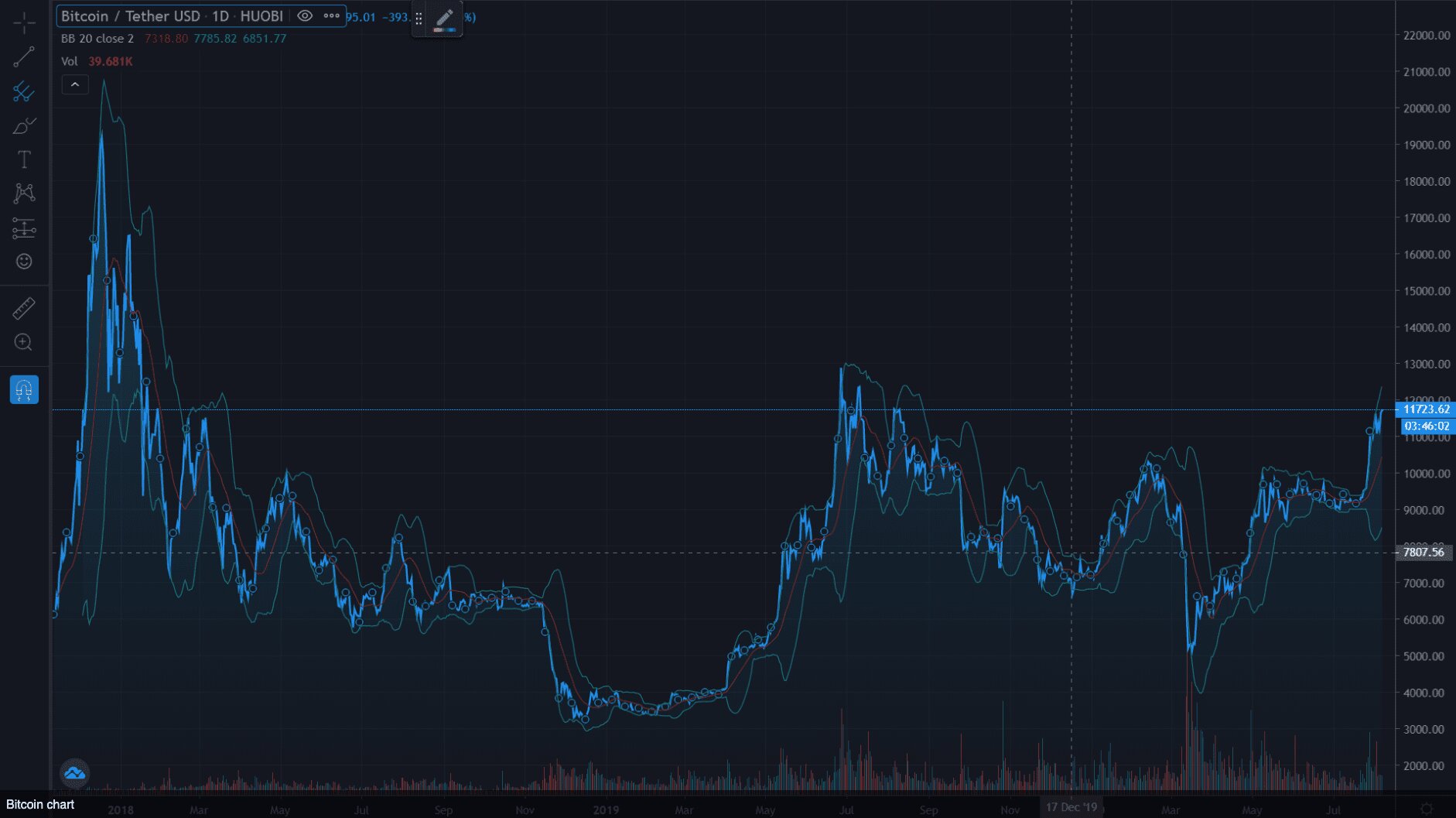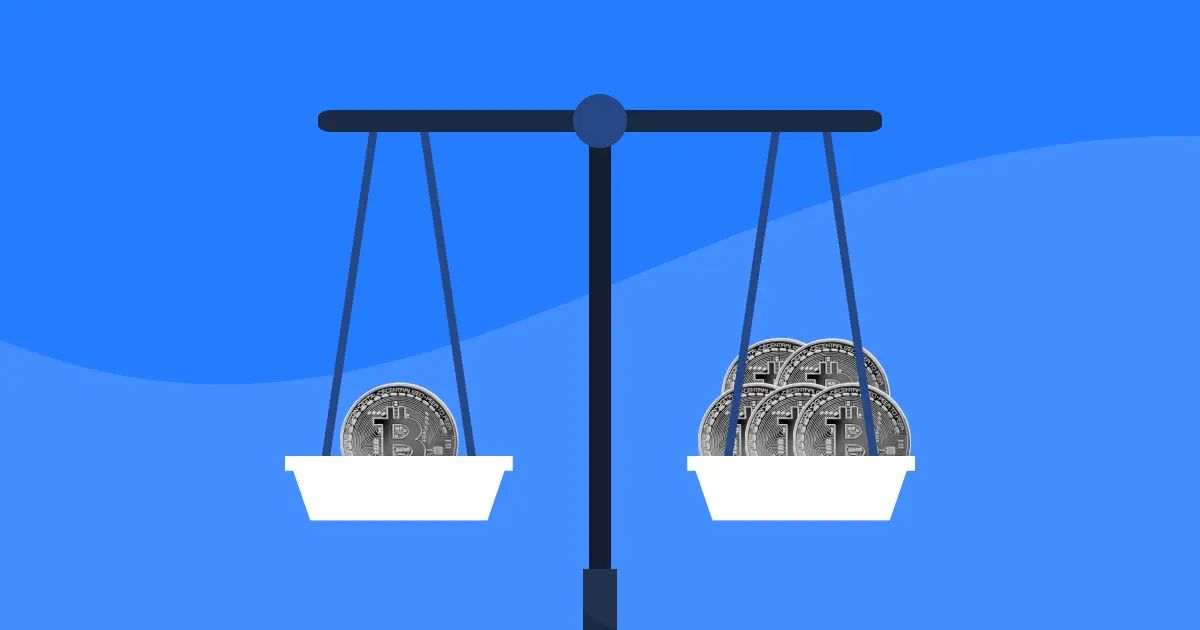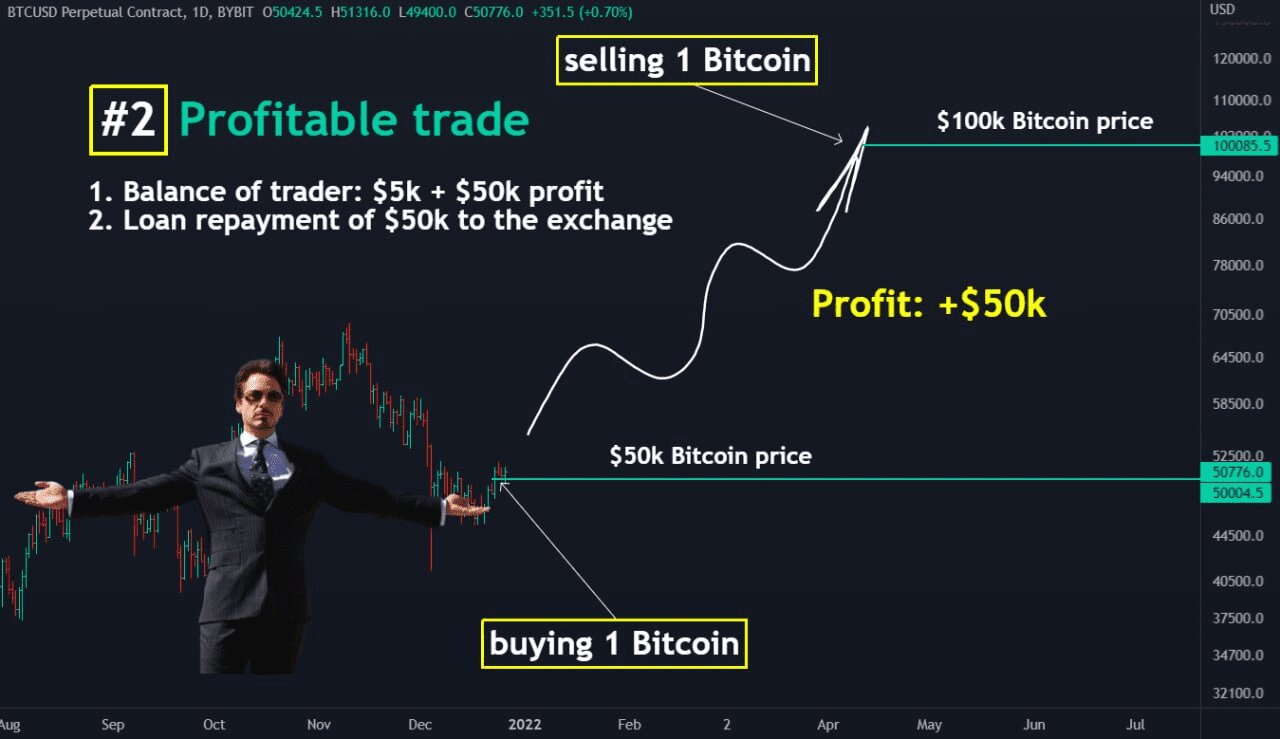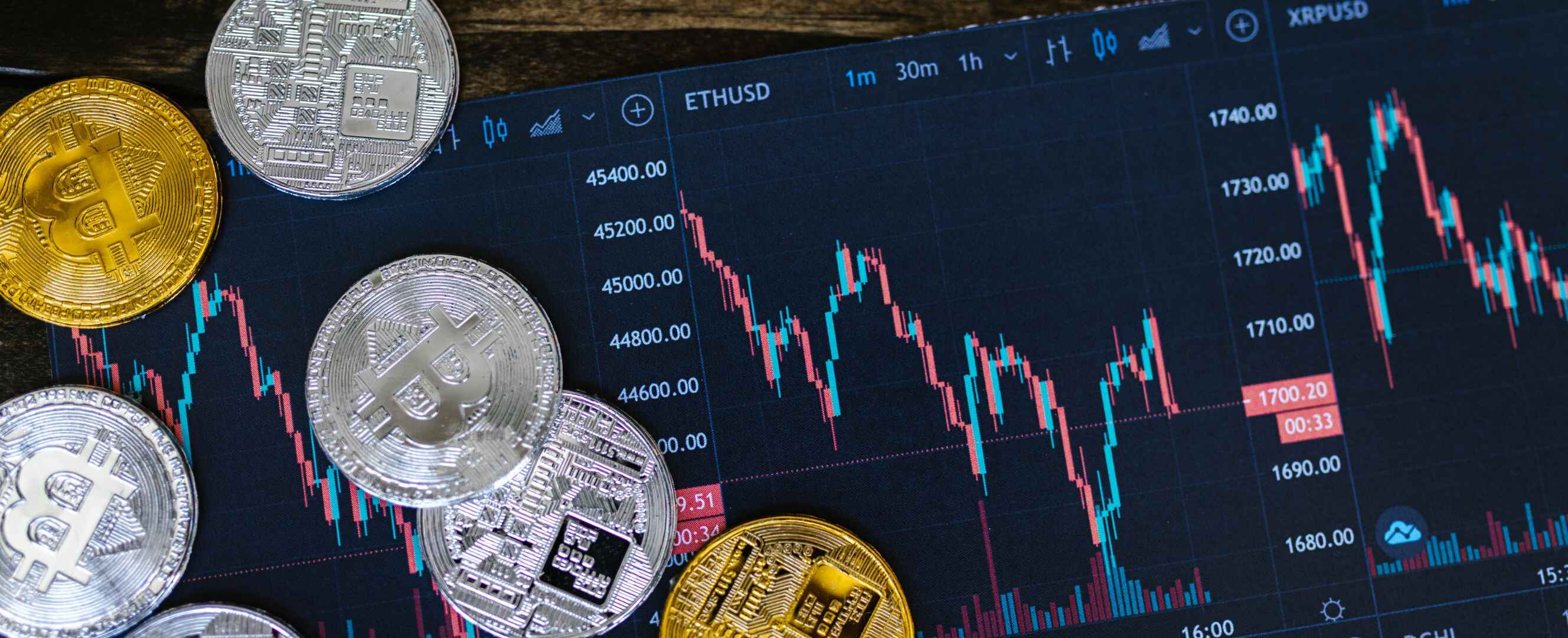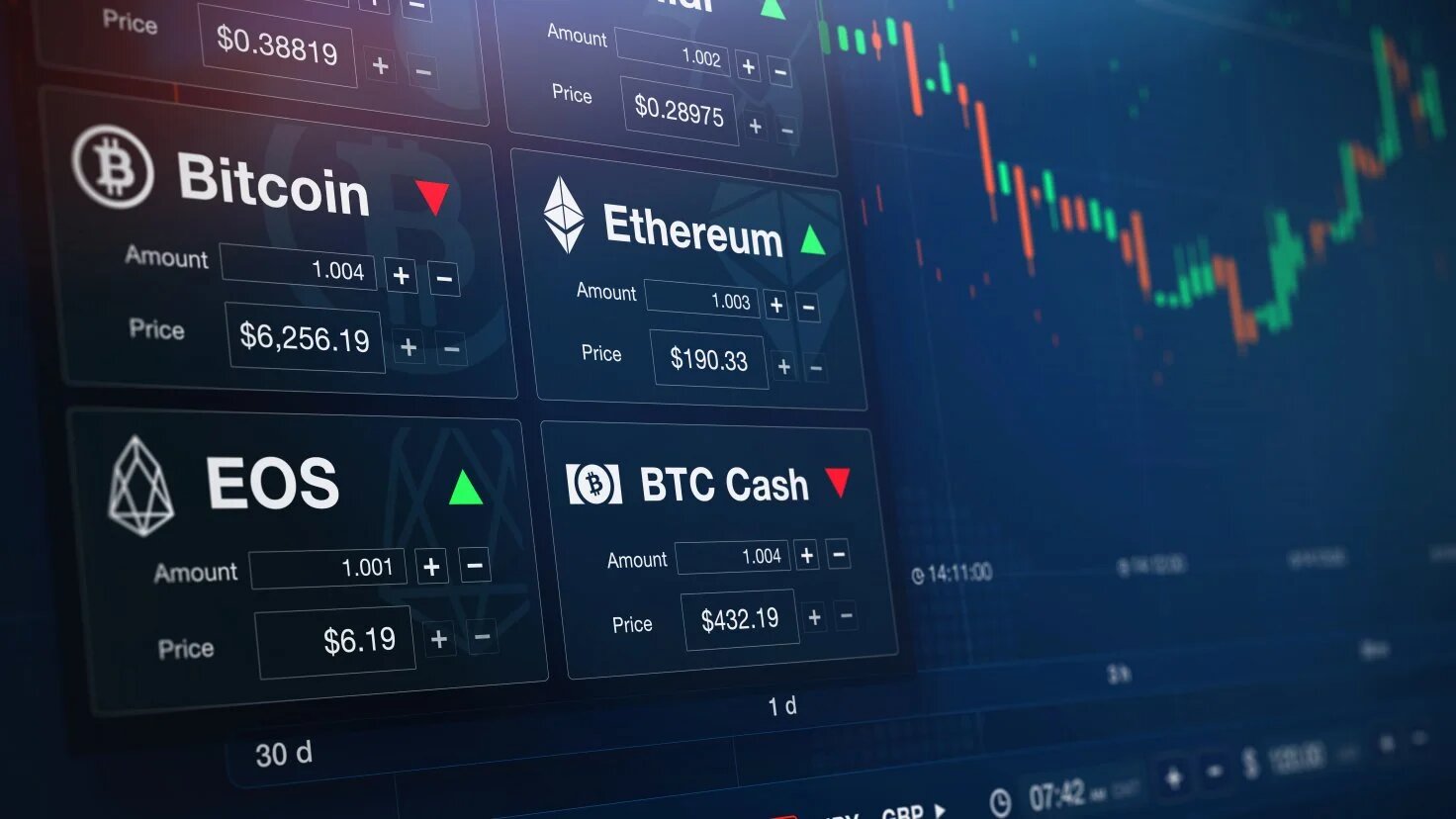Introduction
Margin trading has become increasingly popular in the world of cryptocurrencies. It offers traders the opportunity to amplify their potential profits by borrowing funds to trade with leverage. This concept, although lucrative, comes with its own set of risks that traders must be aware of.
Margin trading, also known as leveraged trading, is a practice where traders can borrow funds from a broker or an exchange to trade larger positions than their account balance would allow. This allows them to enter into trades with much higher monetary value, potentially magnifying both profits and losses.
The allure of margin trading lies in the potential for substantial returns on investment. By being able to trade with more funds than what is currently available in their account, traders can profit from both upward and downward price movements in the market. Additionally, margin trading can provide opportunities to trade a variety of cryptocurrencies, including popular ones like Bitcoin and Ethereum.
However, it is important to note that margin trading carries significant risks. When engaging in leveraged trading, traders not only have the potential to increase their profits but also stand to lose more than they initially invested. It is crucial for traders to understand the risks involved and have a solid risk management strategy in place.
In this article, we will delve into the world of margin trading in the context of cryptocurrencies. We will outline the benefits and risks associated with margin trading, explain how it works, highlight popular platforms for margin trading, and provide some tips for successful margin trading.
If you are interested in exploring the world of margin trading in cryptocurrencies, it is crucial to have a clear understanding of its fundamentals. Whether you are a seasoned trader looking for new strategies or a beginner looking to learn more, this article will serve as a comprehensive guide to margin trading in the crypto market.
Definition of Margin Trading
Margin trading is a trading technique that allows traders to borrow funds from a broker or an exchange to amplify their trading positions. It enables traders to enter into larger trades than their account balance would typically allow. In other words, margin trading allows traders to buy or sell assets using leverage, which can potentially lead to higher profits or losses.
When engaging in margin trading, traders are required to maintain a certain amount of funds, known as the “initial margin,” in their accounts as collateral. This initial margin serves as a cushion to cover potential losses. The amount of leverage that traders can utilize often depends on the platform or exchange they are using, as different platforms offer varying leverage ratios.
For example, if a trader has access to 10x leverage, it means they can trade with ten times the amount of funds they have in their account. This essentially multiplies the potential gains or losses by the leverage ratio.
Margin trading allows traders not only to profit from upward price movements but also to benefit from downward market trends. Traders can open long positions, hoping for the price of an asset to increase, or short positions, speculating on the price to decrease. This flexibility opens up possibilities for traders to profit in both bullish and bearish market conditions.
It is important to note that margin trading involves interest charges on borrowed funds. Traders will typically have to pay interest on the borrowed amount for the duration that they hold their leveraged positions. The interest rate may vary depending on the platform or exchange, so it is essential to be aware of these charges and factor them into trading strategies.
Furthermore, different platforms may have specific rules and requirements for margin trading. Some exchanges may impose minimum margin requirements or restrict margin trading for certain assets. Traders should familiarize themselves with these rules to ensure compliance and avoid any unexpected limitations.
Overall, margin trading is a powerful tool that can amplify trading opportunities in the cryptocurrency market. However, it requires careful consideration of risks, proper risk management strategies, and a solid understanding of the platform-specific rules before engaging in leveraged positions.
Benefits of Margin Trading
Margin trading offers several potential benefits for traders in the cryptocurrency market. While it does come with risks, when used wisely, margin trading can provide opportunities that may not be available with traditional trading methods. Here are some key benefits:
1. Increased Profit Potential: One of the primary advantages of margin trading is the ability to amplify potential profits. By borrowing funds to trade with leverage, traders can enter into larger positions and potentially earn higher returns. This is especially beneficial when the market is trending strongly in a particular direction, as the leverage can magnify the gains.
2. Opportunity to Short Sell: Margin trading enables traders to take advantage of falling prices by opening short positions. When short selling, traders sell an asset that they don’t own, aiming to buy it back at a lower price in the future. This allows traders to profit from downward market trends, something that is not possible with regular spot trading.
3. Diversification: Margin trading allows traders to diversify their portfolios and explore a wider range of trading opportunities. With leverage, traders can access a variety of digital assets and take advantage of short-term price movements in different markets. This diversification potential can help to spread risk and potentially enhance overall returns.
4. Flexibility in a Volatile Market: The cryptocurrency market is known for its volatility, which can present both risks and opportunities. Margin trading provides flexibility to adapt and capitalize on price fluctuations. Traders can seize short-term opportunities, enter and exit positions quickly, and potentially profit from volatile market conditions.
5. Access to Larger Trades: Without leverage, traders with limited capital may only be able to execute small trades. Margin trading allows them to access larger positions and participate in the market at a scale that may not have been possible otherwise. This can provide a significant boost to the trading potential of individuals with limited resources.
6. Hedge Against Existing Positions: Margin trading can also be utilized as a hedging strategy to protect existing positions. For example, if a trader holds a long position on a particular cryptocurrency and anticipates a short-term downturn, they can open a short position using leverage to offset potential losses. This strategy helps to mitigate risk and provides a level of protection against adverse market movements.
It is important to note that while margin trading offers these potential benefits, it also carries risks that traders must be mindful of. Proper risk management and a thorough understanding of the platform and its requirements are essential to maximize the benefits while minimizing the potential downsides of margin trading.
Risks of Margin Trading
While margin trading can provide attractive opportunities, it is important to recognize and understand the risks involved. Margin trading carries higher risk than regular spot trading due to the use of leverage. Here are some key risks to consider:
1. Increased Potential for Losses: The use of leverage in margin trading can amplify both profits and losses. While it has the potential to magnify gains, it also means that losses can be multiplied. If the market moves against a leveraged position, the losses incurred can exceed the initial investment, leading to significant financial losses.
2. Margin Calls: Margin trading involves borrowing funds from the exchange or broker to trade with leverage. If the value of the trader’s positions drops too close to the borrowed amount, the trader may receive a margin call. A margin call requires the trader to deposit additional funds to meet the margin requirements or face the liquidation of their positions. Failing to meet a margin call can result in the loss of the entire position and potentially additional fees.
3. Market Volatility: The cryptocurrency market is highly volatile, and price movements can be sudden and dramatic. While volatility presents opportunities for profit, it can also lead to significant losses. Rapid price swings can erode gains or exceed the leveraged position, resulting in substantial losses. Traders must be prepared for market fluctuations and have strategies in place to manage risk effectively.
4. Interest Charges: When engaging in margin trading, traders borrow funds from the exchange or broker, which typically incurs interest charges on the borrowed amount. These interest charges can accumulate over time, adding to the overall cost of the trade. It is crucial to consider these charges when planning trading strategies and to ensure that the potential profits outweigh the interest costs.
5. Emotional Decision-Making: Margin trading can be emotionally challenging, especially during periods of market volatility or when facing significant losses. The use of leverage can amplify stress and emotions, potentially leading to irrational or impulsive decision-making. It is crucial for traders to maintain discipline, follow a solid risk management plan, and control their emotions while margin trading.
6. Platform and Counterparty Risk: Margin trading involves trusting the exchange or broker with which the trades are conducted. There is always the risk of platform malfunctions, technical glitches, or security breaches that could disrupt trading or compromise funds. Traders should choose reputable platforms with robust security measures to minimize this risk.
It is essential to thoroughly assess these risks and carefully consider your risk tolerance and financial capabilities before engaging in margin trading. Traders should have a clear risk management strategy in place, including setting stop-loss orders, diversifying their positions, and being prepared for potential losses.
How Margin Trading Works in Crypto
Margin trading in the world of cryptocurrencies involves borrowing funds to trade larger positions than what is currently available in a trader’s account. This concept allows traders to take advantage of leverage and potentially amplify their profits. Here’s a breakdown of how margin trading works in the crypto market:
1. Account Setup: To engage in margin trading, traders need to open an account with a platform or exchange that offers margin trading services. They must complete the necessary registration and verification process, which may include providing identification documents and meeting certain eligibility requirements.
2. Deposit Funds: Once the account is set up, traders need to deposit funds into their margin trading account. These funds will serve as collateral for the borrowed amount and will be used to cover any potential losses. The amount of funds required as collateral varies depending on the platform and the leverage ratio used.
3. Choose Leverage: Traders need to decide on the leverage they wish to utilize for their margin trades. Leverage represents the multiplier applied to the trader’s account balance, allowing them to trade with a larger amount than what they actually have in their account. Popular leverage ratios in the crypto market range from 2x to 100x.
4. Place Trades: Once the funds and leverage are set, traders can place margin trades. They can enter either long (buy) or short (sell) positions on various cryptocurrencies, depending on their market predictions. Margin trades usually involve specifying the amount and price at which the trade will be executed.
5. Monitoring and Risk Management: Traders need to closely monitor their margin positions. They must be aware of market movements, potential liquidation levels, and any margin call requirements imposed by the platform. Proper risk management is crucial, including setting stop-loss orders to limit potential losses and maintaining adequate account balance to avoid margin calls.
6. Interest and Fees: Margin trading often incurs interest charges on the borrowed funds. Traders need to consider these ongoing interest payments when calculating their potential profits. Additionally, platforms may charge fees for margin trading services, such as opening and closing positions, as well as funding or withdrawal fees.
7. Closing Positions: Traders can close their margin positions at any time they choose. By closing a position, the borrowed funds are returned, and the resulting profits or losses are realized. Closing a position allows traders to exit the trade and secure any gains or minimize losses.
8. Account Settlement: At the end of the trading session or on a pre-determined settlement date, traders’ margin accounts are settled. This involves any necessary adjustments to the account balance based on the realized profits or losses from the margin trades.
It is important for traders to understand and familiarize themselves with the specific margin trading features and functionalities offered by the platform they choose. Each platform may have its own rules and requirements, so it’s essential to read the terms and conditions and understand the risks associated with margin trading before getting started.
Popular Platforms for Margin Trading
Margin trading has gained significant popularity in the cryptocurrency market, leading to the emergence of various platforms that offer margin trading services. These platforms provide traders with the ability to access leverage, trade larger positions, and potentially amplify their profits. Here are some of the popular platforms for margin trading:
1. Binance: Binance is one of the largest and most well-established cryptocurrency exchanges globally, and it offers a comprehensive margin trading platform. Traders on Binance can access a wide range of digital assets and choose from various leverage options to suit their trading strategies. The platform also provides advanced trading tools and features to enhance the margin trading experience.
2. BitMEX: BitMEX stands for Bitcoin Mercantile Exchange and is widely recognized as a prominent platform for margin trading in cryptocurrencies. It offers leverage of up to 100x on certain assets and supports both long and short positions. BitMEX is known for its advanced trading options and features, including perpetual swaps and futures contracts.
3. Bybit: Bybit is a user-friendly margin trading platform that focuses on Bitcoin and Ethereum perpetual contracts. It offers leverage of up to 100x and provides a seamless trading experience with a customizable interface and advanced order types. Bybit emphasizes high performance and has gained popularity among traders looking for fast and reliable margin trading execution.
4. Kraken: Kraken is a reputable cryptocurrency exchange that offers margin trading for a variety of digital assets. It provides leverage options of up to 5x and offers a user-friendly interface suitable for both novice and experienced traders. Kraken also places a strong emphasis on security, ensuring that traders’ funds are well-protected.
5. FTX: FTX is a cryptocurrency derivatives exchange that provides a wide range of margin trading options. The platform supports leverage of up to 101x and offers an extensive selection of trading pairs, including leveraged tokens and futures contracts. FTX is known for its innovative approach to margin trading and its commitment to providing a robust trading infrastructure.
6. Deribit: Deribit is a popular platform for margin trading options and futures contracts in the cryptocurrency market. It offers leverage of up to 100x and provides a seamless trading experience with advanced trading tools and features. Deribit is particularly known for its focus on Bitcoin options trading and is a preferred platform for traders seeking exposure to this market.
These platforms are just a few examples of the many options available for margin trading in cryptocurrencies. Each platform offers its unique features, trading pairs, and leverage options, catering to the diverse needs of traders. It is essential for traders to research and compare different platforms to find the one that aligns with their trading requirements and provides a secure and reliable trading environment.
Tips for Successful Margin Trading
Margin trading can be a lucrative strategy in the cryptocurrency market, but it also carries significant risks. To increase the chances of success while margin trading, traders should consider the following tips:
1. Educate Yourself: Before engaging in margin trading, it is essential to have a solid understanding of the market, trading strategies, and the specific platform or exchange you plan to use. Take the time to educate yourself on technical analysis, risk management, and the factors that can affect cryptocurrency prices.
2. Start Small: It is advisable to start with small position sizes when beginning margin trading. This allows you to become familiar with the platform and the intricacies of margin trading without risking a significant amount of capital. As you gain experience and confidence, you can gradually increase your positions.
3. Use Stop-Loss Orders: Implementing stop-loss orders is crucial when margin trading. A stop-loss order automatically closes a position at a predetermined price, limiting potential losses. Setting a stop-loss order helps protect your account from excessive losses in case the market moves against your position.
4. Set Realistic Profit Targets: Margin trading can be enticing due to the potential for amplified profits. However, it is important to set realistic profit targets that align with your risk tolerance. Greed can lead to overtrading or holding positions for too long, which can increase the risk of significant losses.
5. Develop a Risk Management Strategy: Proper risk management is crucial in margin trading. This includes setting a maximum acceptable level of risk per trade, diversifying your portfolio, and not investing more than you can afford to lose. Having a well-defined risk management strategy helps protect your capital and minimize potential losses.
6. Stay Informed: The cryptocurrency market is dynamic and influenced by various factors. Stay updated on cryptocurrency news, market trends, and any regulatory developments that may impact the market. Being informed allows you to make more informed trading decisions and adapt your strategies accordingly.
7. Limit Leverage: While leverage can magnify profits, it can also amplify losses. It is crucial to use leverage judiciously and not overextend yourself. Consider the risks associated with higher leverage ratios and choose a leverage level that suits your risk appetite and trading style.
8. Practice Good Trading Discipline: Maintain discipline and stick to your trading plan. Avoid making impulsive decisions based on emotions or short-term market fluctuations. Stick to your risk management strategies, follow your trading plan, and avoid chasing losses or deviating from your predetermined strategies.
9. Regularly Monitor Your Positions: Margin trading requires active monitoring. Regularly review your positions, market conditions, and any news that may impact your trades. Adjust your stop-loss orders, take profit levels, or exit trades if necessary. Being proactive and vigilant allows you to adapt to changing market conditions effectively.
10. Consider Using Demo Accounts: If you are new to margin trading or want to test out strategies, consider using demo accounts provided by some platforms. Demo accounts allow you to practice margin trading with virtual funds, giving you a risk-free environment to gain experience and refine your trading skills.
Margin trading can be a powerful tool for traders, but it requires knowledge, discipline, and careful risk management. By following these tips, you can enhance your margin trading experience and increase your chances of success in the cryptocurrency market.
Conclusion
Margin trading in the cryptocurrency market offers traders an opportunity to amplify their potential profits by trading with leverage. It allows traders to enter into larger positions than what their account balance would typically allow. However, this trading strategy comes with its own set of risks that traders must carefully consider and manage.
In this article, we discussed the definition of margin trading and outlined its benefits and risks. We also explored how margin trading works in the crypto market, including the process of setting up an account, depositing funds, choosing leverage, placing trades, and managing risk. Additionally, we highlighted some popular platforms for margin trading and provided tips for successful margin trading.
It is crucial for traders to understand that margin trading can lead to significant losses if not approached with caution. Proper risk management, including setting stop-loss orders, maintaining realistic profit targets, and using leverage wisely, is essential for success in margin trading. Traders should also stay informed, continually educate themselves, and develop a disciplined trading approach to navigate the dynamic cryptocurrency market.
Margin trading offers exciting opportunities for experienced traders looking to enhance their trading strategies, but it is not recommended for beginner traders or those without a solid understanding of the market. Before engaging in margin trading, make sure to do thorough research, choose a trusted platform, and carefully assess your risk tolerance and financial capabilities.
Remember, margin trading should be approached with caution and only with funds that you are willing and able to lose. With the right knowledge, strategies, and risk management practices, margin trading can be a valuable tool for maximizing potential profits in the dynamic world of cryptocurrencies.







